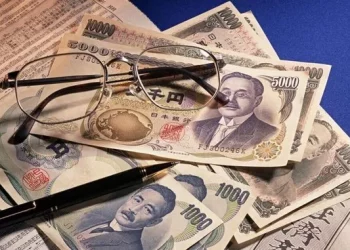The world of foreign exchange (Forex) trading can be a bit overwhelming at first, but once you understand the fundamental concepts, it becomes much easier to navigate. One of the core aspects of Forex trading is understanding currency exchange rates, which determine how much one currency is worth relative to another.
In this article, we will break down the process of converting US dollars (USD) into Australian dollars (AUD), taking into account various factors such as exchange rates, market conditions, and economic influences. By the end of this article, you’ll have a comprehensive understanding of how much $39 USD is in Australian dollars and the key factors that influence this conversion.
Understanding Currency Exchange Rates
A currency exchange rate is the price of one country’s currency in terms of another. For example, if the exchange rate between the US dollar (USD) and the Australian dollar (AUD) is 1 USD = 1.30 AUD, this means that for every US dollar, you would receive 1.30 Australian dollars in return.
These exchange rates fluctuate constantly due to a variety of factors including interest rates, economic indicators, and geopolitical events. Forex markets are the primary platforms where currencies are exchanged, and the exchange rates are influenced by both supply and demand.
Exchange rates are typically quoted in two ways: direct and indirect. In the case of USD/AUD, the direct quote is the amount of AUD you will receive for each unit of USD. For instance, if the rate is 1 USD = 1.30 AUD, this would be a direct quote for USD/AUD.
Converting $39 USD to Australian Dollars
Now that we understand what exchange rates are, let’s tackle the main question: How much is $39 USD in Australian dollars? The exact value of $39 USD in AUD will depend on the current exchange rate.
Exchange Rate Variations
The exchange rate between the USD and AUD can fluctuate throughout the day as Forex traders react to economic news, market sentiment, and various other factors. For example, at the time of writing, the exchange rate might be 1 USD = 1.30 AUD, meaning $39 USD would convert to:
39 USD×1.30 AUD/USD=50.70 AUD
So, if the exchange rate is 1 USD = 1.30 AUD, $39 USD would be equivalent to 50.70 AUD. However, exchange rates are volatile, so the rate you receive could be different by the time you exchange your currency, especially if you’re conducting the conversion through a bank, currency exchange service, or online platform.
Example Conversion Scenarios
Let’s explore a few more examples to highlight how exchange rates impact the conversion of $39 USD to AUD:
Scenario 1: 1 USD = 1.35 AUD
$39 USD × 1.35 AUD/USD = 52.65 AUD In this case, you would receive 52.65 AUD for your $39 USD.
Scenario 2: 1 USD = 1.25 AUD
$39 USD × 1.25 AUD/USD = 48.75 AUD In this case, the conversion would yield 48.75 AUD for $39 USD.
As you can see, a small change in the exchange rate can have a noticeable effect on the amount of Australian dollars you receive for your US dollars.
Factors Affecting USD/AUD Exchange Rates
To understand why the exchange rate between USD and AUD fluctuates, we need to consider the factors that influence the supply and demand for these currencies. The foreign exchange market is constantly in motion, driven by both macroeconomic and microeconomic factors. Here are some key drivers that influence the USD/AUD exchange rate:
1. Interest Rates
One of the most significant factors that influence currency exchange rates is the difference in interest rates between two countries. When a country’s central bank raises its interest rates, it typically attracts foreign capital, increasing demand for the country’s currency.
For example, if the Reserve Bank of Australia (RBA) raises interest rates while the Federal Reserve (Fed) in the US keeps rates steady, investors may shift their funds to Australia to earn higher returns. This increased demand for AUD could cause the value of the Australian dollar to rise relative to the US dollar.
Conversely, if the RBA lowers interest rates, the demand for AUD could decrease, leading to a depreciation of the currency.
2. Economic Indicators
Economic data such as GDP growth, employment figures, and inflation rates play a crucial role in determining a currency’s value. Strong economic performance typically leads to an appreciation of a country’s currency, while weak economic indicators can cause a depreciation.
For instance, if the US reports strong job growth and low unemployment, the US dollar could rise in value against other currencies, including the Australian dollar. Similarly, if Australia experiences strong economic growth, the Australian dollar may appreciate relative to the US dollar.
3. Commodity Prices
Australia is a major exporter of commodities such as iron ore, coal, and gold. As a result, the value of the Australian dollar is often linked to the performance of these commodities in global markets. When commodity prices rise, the Australian economy benefits, and the value of the Australian dollar tends to increase.
Conversely, if commodity prices fall, the Australian economy may experience a slowdown, leading to a depreciation of the Australian dollar. This is particularly true when the prices of iron ore and coal, two of Australia’s largest exports, decline.
4. Geopolitical Events and Global Market Sentiment
Geopolitical events, such as elections, trade wars, and global crises (like the COVID-19 pandemic), can cause fluctuations in currency values. In times of uncertainty, investors tend to seek safe-haven assets, such as the US dollar. This increased demand for USD can cause the US dollar to strengthen against other currencies, including the Australian dollar.
For example, during the height of the COVID-19 pandemic, the US dollar strengthened as investors flocked to the safety of USD-denominated assets. This led to a decline in the value of many other currencies, including the Australian dollar.
5. Market Speculation and Sentiment
Currency markets are highly speculative, with traders constantly buying and selling currencies based on their expectations of future price movements. Market sentiment and speculation can therefore have a significant impact on the value of a currency.
If traders believe that the US economy is going to outperform the Australian economy in the near future, they may sell AUD and buy USD, causing the Australian dollar to weaken relative to the US dollar. Conversely, if traders believe the opposite, they may sell USD and buy AUD, leading to a stronger Australian dollar.
Where to Convert $39 USD to AUD
If you’re looking to convert your $39 USD into Australian dollars, you have several options available. Each option will have its own exchange rate, which may differ slightly from the official market rate due to fees and other factors. Let’s explore a few of the most common ways to exchange your currency.
1. Currency Exchange Services
Many currency exchange services, both physical locations (such as at airports or currency exchange offices) and online platforms, offer USD to AUD conversion. These services often charge a spread, which means the exchange rate they offer may not be as favorable as the market rate.
It’s always a good idea to compare rates from different services to ensure you’re getting the best deal. Keep in mind that these services may also charge additional fees or commissions, which can impact the overall amount of AUD you receive.
2. Banks
Most banks offer currency exchange services for their customers. However, the exchange rates offered by banks are usually less favorable than those available through Forex platforms or currency exchange services. Additionally, banks may charge service fees or commissions for currency conversion.
Before exchanging your $39 USD at a bank, it’s worth checking their exchange rate and comparing it with other available options.
3. Online Forex Platforms
Online Forex platforms and currency converters like PayPal or Wise (formerly TransferWise) offer competitive exchange rates for converting USD to AUD. These platforms often provide real-time rates based on the current market conditions and may offer lower fees than traditional banks.
However, you should always be mindful of the fees associated with using these platforms. Some services charge a percentage of the amount being exchanged, while others may charge a fixed fee.
4. ATMs
If you’re traveling to Australia and need to exchange your USD for AUD, using an ATM may be a convenient option. However, ATMs often charge additional withdrawal fees and may offer less favorable exchange rates compared to currency exchange services or online platforms.
It’s always a good idea to check with your bank to see if they have any partnerships with Australian banks to reduce ATM withdrawal fees.
Conclusion
In conclusion, the value of $39 USD in Australian dollars depends on the current exchange rate, which can fluctuate due to various factors such as interest rates, economic performance, commodity prices, geopolitical events, and market sentiment. Using the exchange rate of 1 USD = 1.30 AUD as an example, $39 USD would be equivalent to 50.70 AUD. However, depending on the market conditions, your conversion could be higher or lower.
When converting USD to AUD, it’s important to compare different options such as currency exchange services, banks, online Forex platforms, and ATMs to ensure you’re getting the best possible rate. By understanding the factors that influence exchange rates, you can make more informed decisions and potentially maximize the value of your currency exchange.
In Forex trading, knowing how much a currency is worth relative to another is essential for successful trading strategies. As market conditions change, so do exchange rates, and understanding these dynamics will help you navigate the complexities of the global currency markets.
Related Topics:



























